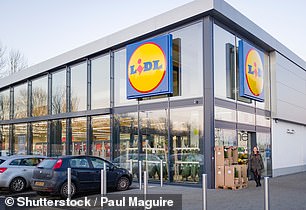Takes the cake: Lidl sales in the three months to May 12 were 9.4% higher than the same period last year
Lidl gained record share of the grocery market this spring, while archrival Aldi lost ground.
As a fierce battle for customers rages, figures showed Lidl’s sales in the three months to May 12 were 9.4 per cent higher than the same period a year earlier.
That gave it a market share of 8.1 percent, the highest level on record for the German discounter and up from 7.7 percent a year ago.
By contrast, Aldi’s sales rose just 2.2 percent and its market share fell from 10.1 percent to 10 percent, although since September 2022 it has replaced Morrisons as Britain’s fourth-largest supermarket. .
Kantar, which published the data, attributed Lidl’s rise to success on its bakery counters, where fresh bread, cakes and pastries were in high demand.
Discounts through their app also proved popular.
Jonathan De Mello, founder of consultancy JDM Retail, said he believed Aldi was a victim of its excellent performance last year.
“It will always be more difficult to surpass the level of growth they achieved before,” he said.
“Lidl had good growth last year, but it was nowhere near Aldi’s.”
And price cuts at supermarket giants Tesco and Sainsbury’s – in a bid to compete with the runaway success of Aldi – have meant competition for cash-strapped shoppers has increased.
Britain’s largest supermarket, Tesco, increased its share to 27.6 percent from 27.1 percent a year ago, and the second largest, Sainsbury’s, rose from 14.8 percent to 15.1 percent. hundred.
Trouble continued at two privately held grocers, Asda and Morrisons, with both losing market share despite launching cheaper products to compete with discounters.

